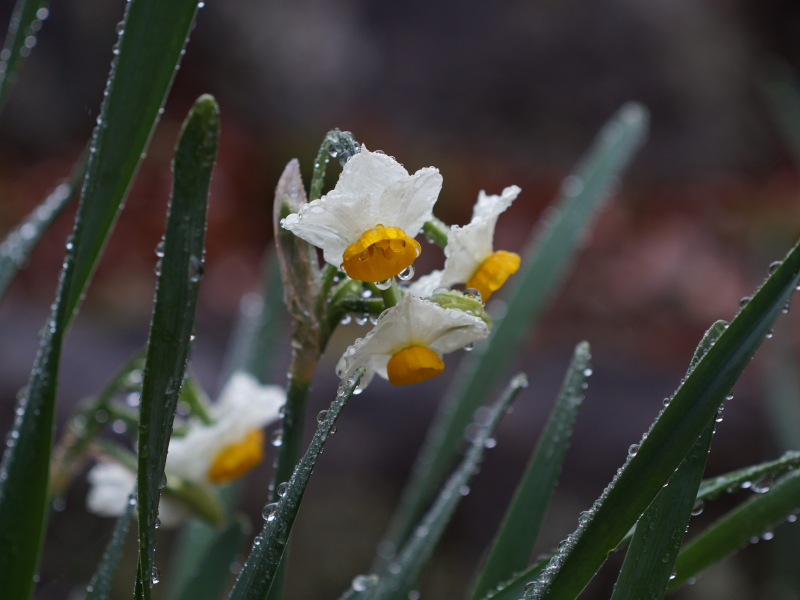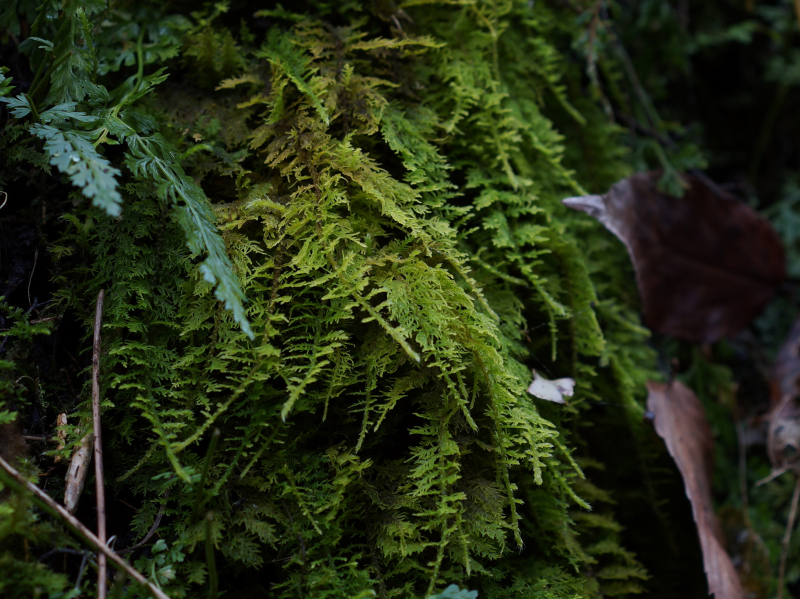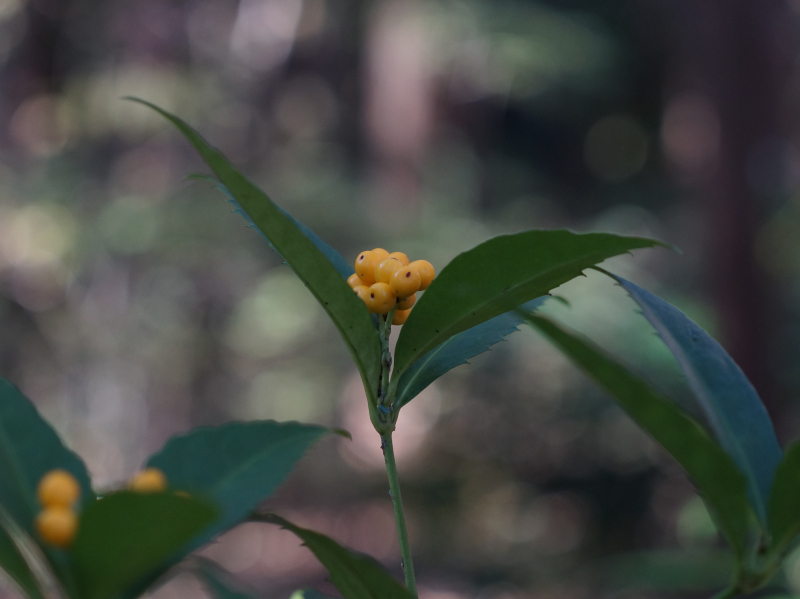フィールド日記
2024年01月
2024.01.30
ウメ
築山でウメが咲いています。梅には多くの品種があり、花の色や花弁の数はさまざまです。築山では紅梅に少し遅れて白梅が咲き始めました。
2024.01.26
ヒメツルソバ
ヒメツルソバが咲いています。ヒマラヤ地方原産の園芸植物ですが、野生状態で生えていることもよくあります。花は一年中見ることができます。
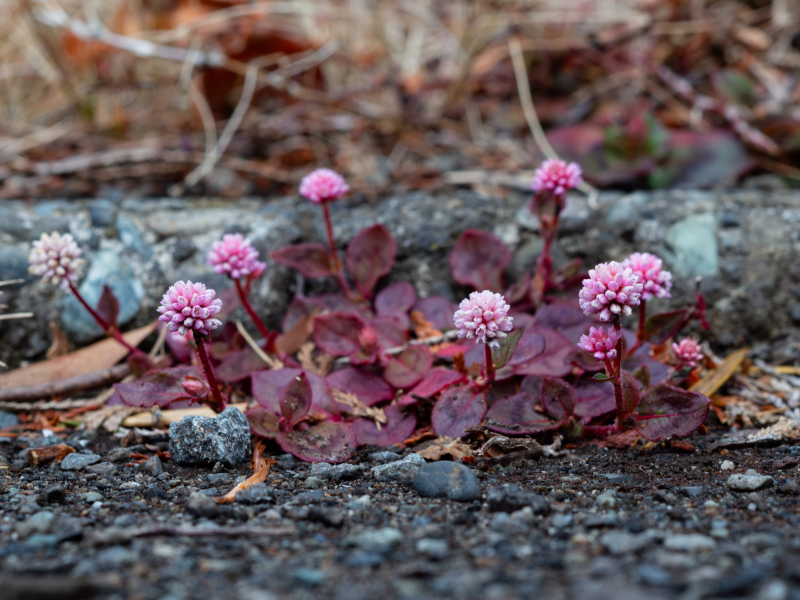
2024.01.23
スイセン
スイセンが咲いています。12月から3月に香りのある花を咲かせます。もともとは古い時代に中国を経由して渡来したといわれ、海岸近くでは野生化しています。花の後に種子はできず、球根によってふえていきます。
"Suisen (スイセン)" plants are in bloom. They bloom fragrant flowers from December to March. They came to Japan in old times by way of China and started to grow wildly along coasts. After flowering, they don't bear seeds, so they spread by their bulbs.
2024.01.19
トウゲシバ
トウゲシバが胞子のうをつけています。山地の湿った樹林内に生えるシダ植物で、腎臓型の黄色い胞子のうを葉のつけ根に一つずつつけます。葉の形や大きさには変化があり、変種として区別することもあります。
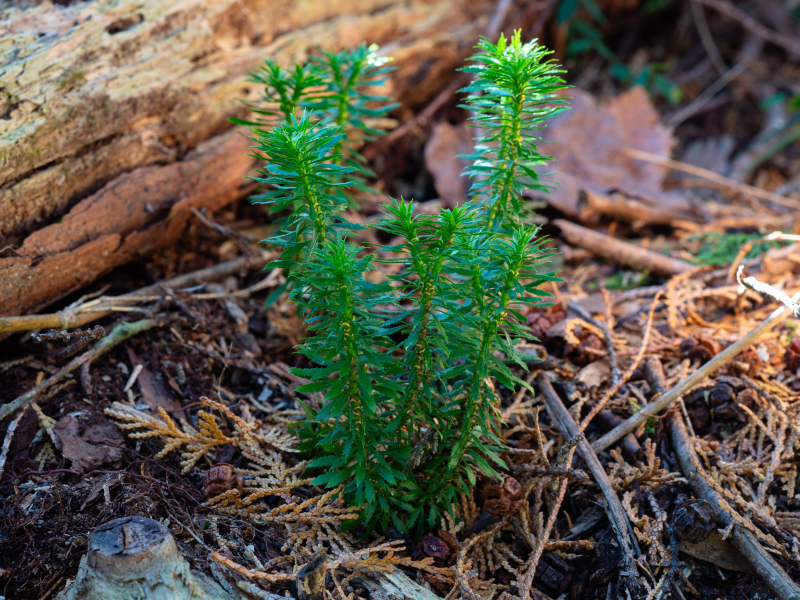
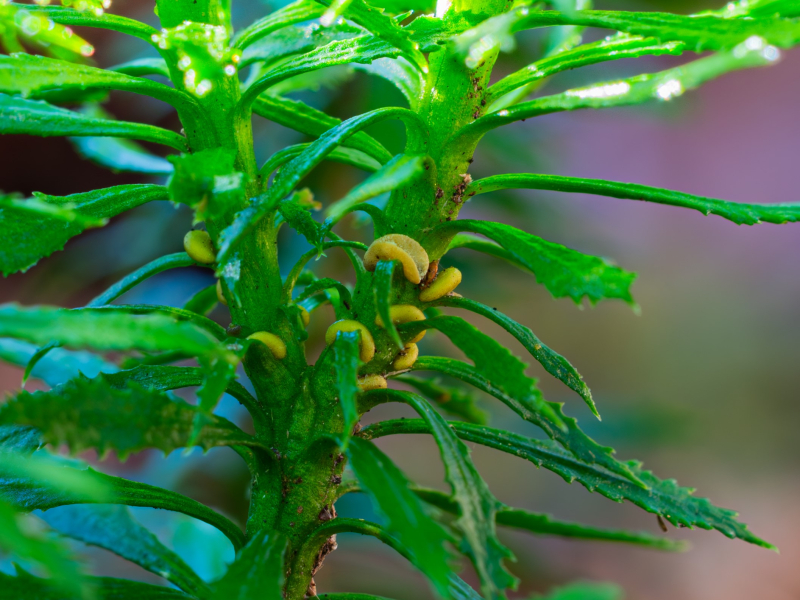
2024.01.16
ロウバイ
ロウバイが咲いています。中国原産の落葉低木で、よく庭木として植栽されています。1月ごろ、葉よりも先に黄色い花を咲かせます。花びらは透明感があり、ろう細工のようです。ふつう花の中心の花びらは赤紫色ですが、すべて黄色いものをソシンロウバイといい、こちらもよく植栽されています。
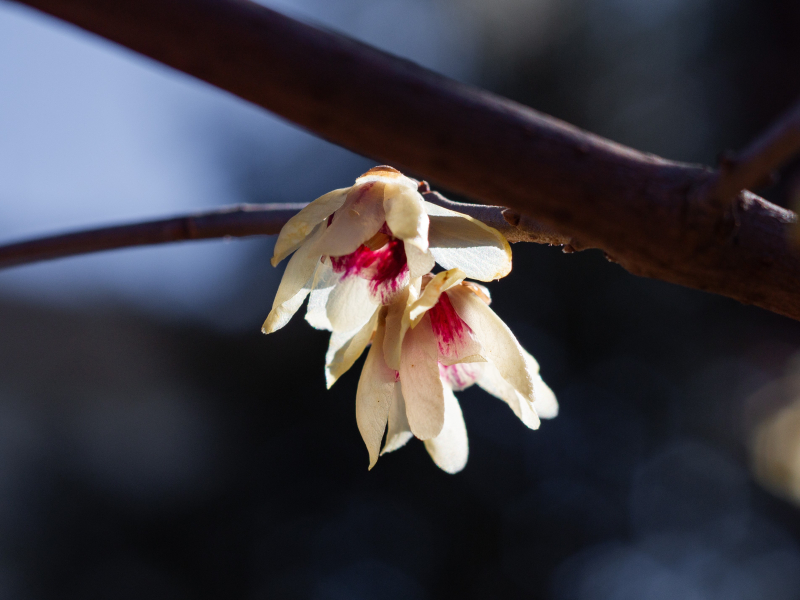
2024.01.12
トヤマシノブゴケ
裏道の石垣でトヤマシノブゴケが見られます。全国でよく見られる大型のコケで、雨の後の湿った葉はとても美しいです。日当たりのよさによって緑~黄色まで色が変化するようです。
"Toyama-Shinobu-Goke (トヤマシノブゴケ)" mosses grow on a stone wall on the back road. They are large mosses that grow all over Japan. The wet leaves after raining are very beautiful. The color of the leaves vary from green to yellow depending on the exposure of sunshine.
2024.01.09
トサカホウオウゴケ
トサカホウオウゴケがオレンジ色の胞子体をつけています。ホウオウゴケという名前は、葉の形が、伝説上の鳥である鳳凰の尾羽の形に似ていることに由来します。世界遺産・平等院の鳳凰堂に据えられている鳳凰像(一万円札の裏面にも描かれています)の尾羽と見比べてみると、確かに形が似ていることがわかります。
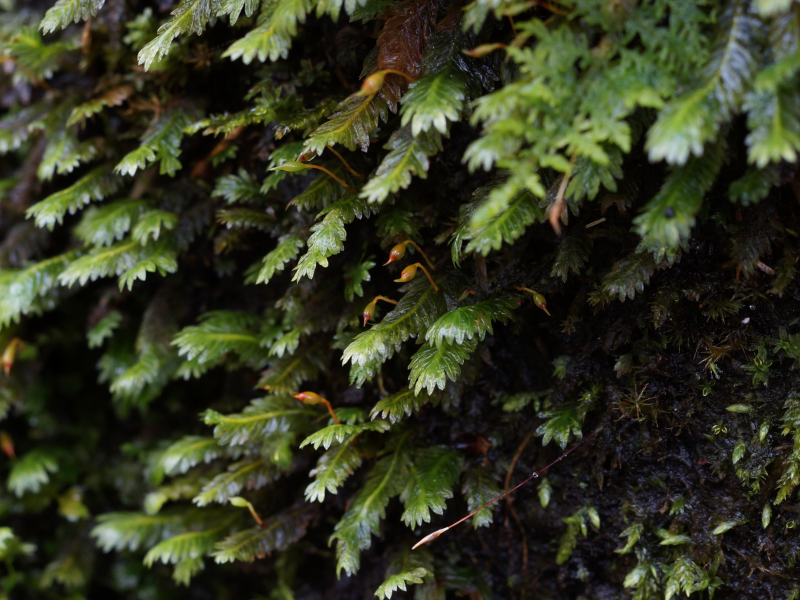
2024.01.05
アマチャヅル
アマチャヅルが果実をつけています。黒緑色で環状の模様があるのが特徴です。和名のアマチャヅルは、葉を乾燥させて煎じたものに甘味があり、つる性の植物であることに由来します。
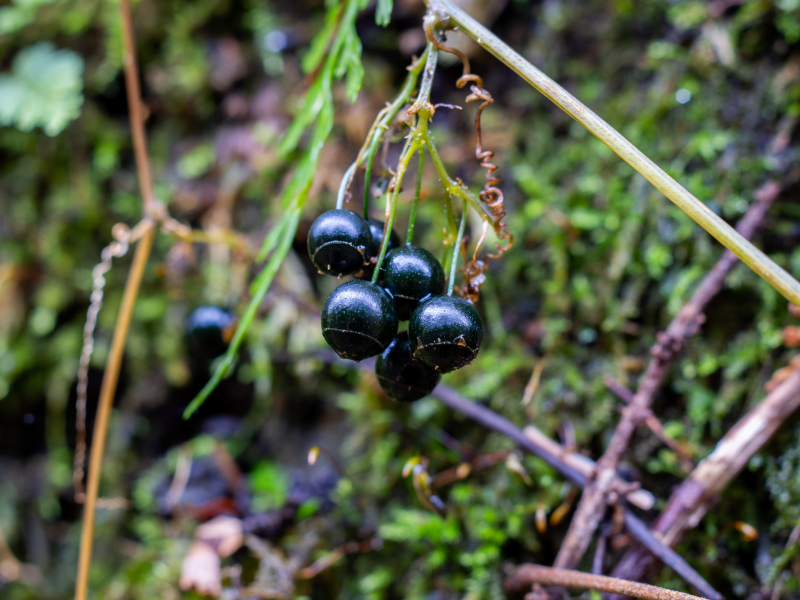
2024.01.02
キミノセンリョウ
キミノセンリョウが果実をつけています。センリョウは通常赤い実をつけますが、黄色の実をつける品種をキミノセンリョウ(黄実のセンリョウ)と呼んでいます。センリョウは正月に赤い実をつけることから、縁起の良い木としてよく栽培されています。
"Kimi-No-Senryou (キミノセンリョウ)" trees are bearing their fruits. "Senryou" trees usually bear red fruits, but some of them bear yellow fruits and are called "Kimi-No-Senryou," which means yellow fruit Senryou. Senryou trees bear their red fruits in the New Year so they are regarded as a fortunate tree and, therefore, they are popular and often planted.
- 1 / 1


